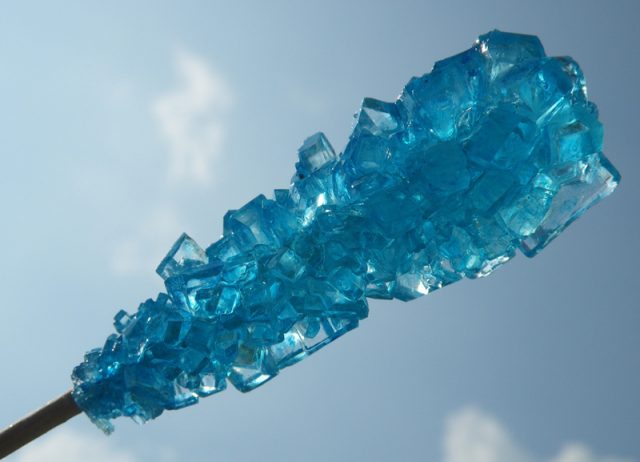What bounds a molecular solid together?

We usually think of crystals as composed of different atoms in certain proportions, this proportion being the molecular fórmula that represents the crystal. However, it is not surprising that any molecule could be the basis of a crystal structure, whether a simple molecule such as methane, or a complicated molecule such as a protein or DNA.
In molecular solids, close packing principles are important as in any other crystal, but because the molecules have complicated shapes these principles lead to similarly complicated structures.
In order to grasp the structure of these solids we have to consider some particularities. First, the electrons in a molecule are already shared in molecular bonds, so there are no available electrons to participate in ionic, covalent, or metallic bonds with other molecules. Moreover, molecules are electrically neutral, so there are no Coulomb forces involved. This implies that bonding forces of a different kind are acting.
Molecular solids are held together by much weaker forces, which generally depend on the electric dipole moments of the molecules. Because these forces are much weaker than the internal forces that hold a molecule together, a molecule can retain its identity in a molecular solid.
The electric dipole moment of one molecule can exert an attractive force on the dipole moment of another. The dipole cohesive force (which is proportional to 1/R3, where R is distance) in molecular solids is generally weaker than the 1/R2 Coulomb force that is responsible for the cohesive energies of other solids. Molecular solids are therefore more weakly bound and have lower melting points than ionic, covalent, or metallic solids, because it takes less thermal energy to break the bonds of a molecular solid. Moreover, if the molecules do not have a centre of symmetry, the structures may pair molecules in opposition orientations to cancel the molecular dipole moments.
Some molecules (called polar molecules) have permanent electric dipole moments consisting of a positive charge on one end of the molecule and an equal negative charge on the opposite end. For example, in a water molecule, the oxygen atom tends to attract all of the electrons of the molecule and so looks like the negative end of the dipole; the two “bare” protons are the positive ends of the dipole. The dipole forces between water molecules are responsible for the beautiful hexagonal patterns of snowflakes. When bonding of this sort involves hydrogen atoms, as it does in water, it is known as hydrogen bonding.
It is also possible to have dipole forces exerted between atoms or molecules that have no permanent dipole moments. Quantum mechanical fluctuations can produce an instantaneous electric dipole moment in one atom, which then induces a dipole moment by polarizing a neighbouring atom. The result is an attractive dipole-dipole force known as the van der Waals force, which is responsible for the bonding in certain molecular solids (as well as for such physical effects as surface tension and friction).
The van der Waals force is extremely weak; it falls off with separation distance like 1/ R7. In inert gas crystals, the nearest neighbor distance is 0.3–0.4 nm, but the cohesive energies are typically only 10 kJ/mol or 0.1 eV/atom. Solids bound by these weak forces have low melting points, because little thermal energy is required to break the bonds. In fact, because the induced dipole moment of an atom or molecule should be approximately proportional to its total number of electrons, we might expect that the melting points of nonpolar molecular solids should be roughly proportional to the number of electrons in each molecule.
References:
Dove, M.T. (2002) Structure and Dynamics: An Atomic View of Materials Oxford Master Series in Condensed Matter Physics / Oxford University Press
Krane. K. (2012) Modern Physics 3rd Edition, John Wiley & Sons
Author: César Tomé López is a science writer and the editor of Mapping Ignorance